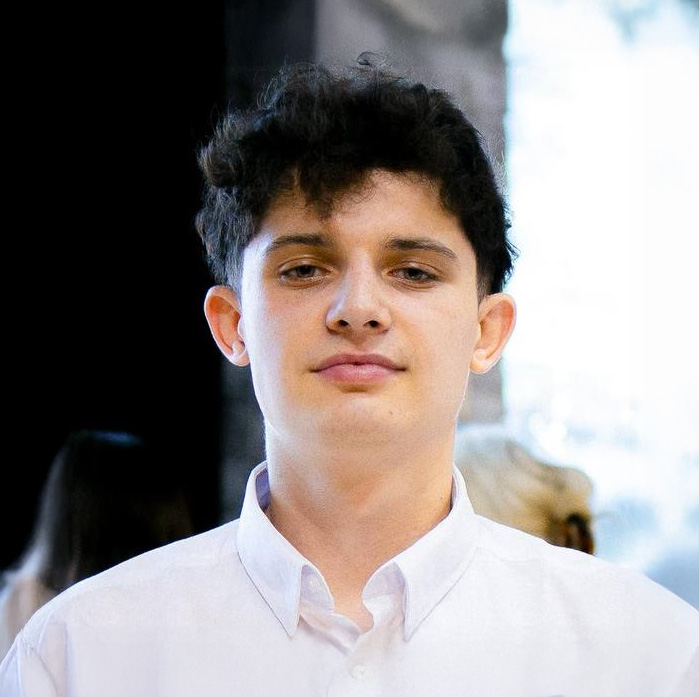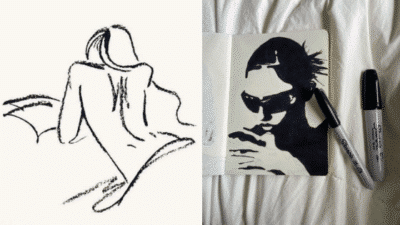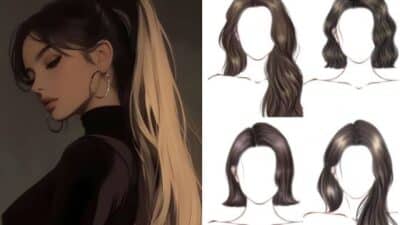Fantasy landscape concept art is a powerful tool that brings imaginary worlds to life through detailed and imaginative visual designs. It helps you visualize otherworldly environments by blending creativity with technical skill, setting the foundation for immersive storytelling and world-building. These landscapes go beyond simple scenery to create a vivid sense of place that supports the mood, theme, and narrative of any fantasy project.
When you explore fantasy landscape concept art, you’ll find it combines elements from mythology, science fiction, and pure imagination, shaped through various artistic techniques and digital tools. This art form plays a crucial role not just in entertainment like video games and movies, but also in guiding creative decisions and inspiring audiences by presenting unique, immersive environments.
Key Takeways
- Creating fantasy landscapes involves blending imagination with artistic techniques.
- Strong visual design helps build immersive and believable worlds.
- Fantasy landscapes are essential in entertainment and creative development.
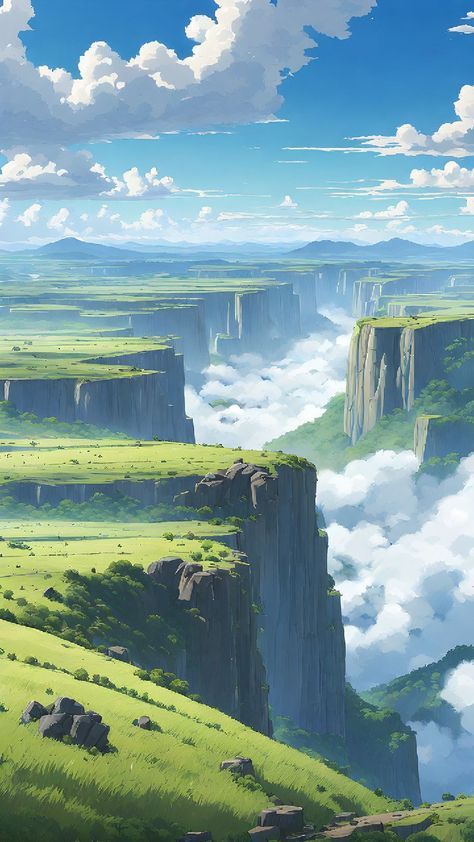

Essentials of Fantasy Landscape Concept Art
Fantasy landscape concept art relies on creating visually compelling environments that blend creativity with believable design. You must balance imaginative elements with coherent structure to build worlds that engage viewers and fit within the tone of your project. Focus on how landscapes communicate mood, scale, and narrative potential.
Defining Fantasy Landscapes
Fantasy landscapes go beyond realistic scenery by incorporating imaginative and often otherworldly elements. You can include floating islands, unusual flora, or exaggerated geological features that don’t exist in reality. These settings are crafted to support storytelling in games, films, or books.
Your goal is to create places that feel both fantastical and immersive. Details like unusual color schemes, unique lighting, and atmospheric effects enhance the surreal nature of these landscapes, distinguishing them from natural environments. A strong fantasy landscape acts as a visual gateway into the world you are building.
The Role of Imagination in Fantasy Art
Imagination drives every step of your fantasy landscape creation. Unlike traditional landscapes, you must envision elements unrestricted by physical laws or real-world logic. This creative freedom allows you to design scenes that inspire awe or mystery.
Still, your use of imagination should serve a specific purpose in storytelling or world-building. Consider how your choices in shape, scale, and composition influence the mood and atmosphere. Imagination is not random but a tool to amplify the emotional impact of your scene and hint at the world’s lore.
Key Elements of Surreal Environments
When designing surreal fantasy landscapes, focus on these critical components:
- Unique Terrain: Mountains with impossible shapes, vast deserts of strange crystals, or deep forests with glowing plants.
- Color and Light: Employ vibrant or contrasting colors to evoke otherworldly sensations. Use directional lighting to highlight mysterious features or create dramatic shadows.
- Atmospheric Effects: Fog, magical auras, and shifting weather can deepen immersion by adding layers of mood and depth.
- Scale and Perspective: Play with size relationships to make structures monumental or intimate, enhancing wonder or danger.
Incorporate these consistently to craft fantasy landscapes that feel convincing despite their unreal nature.
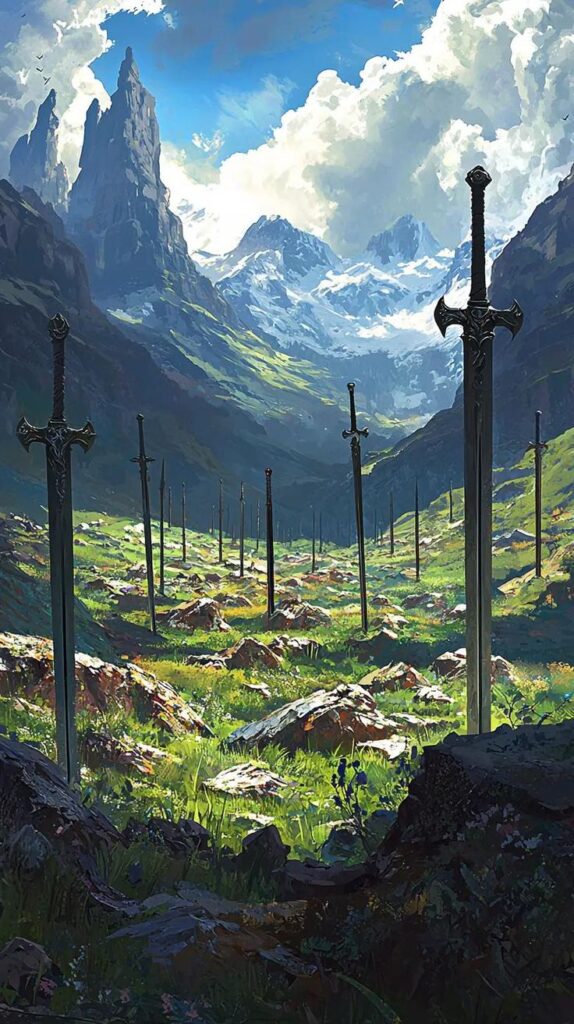
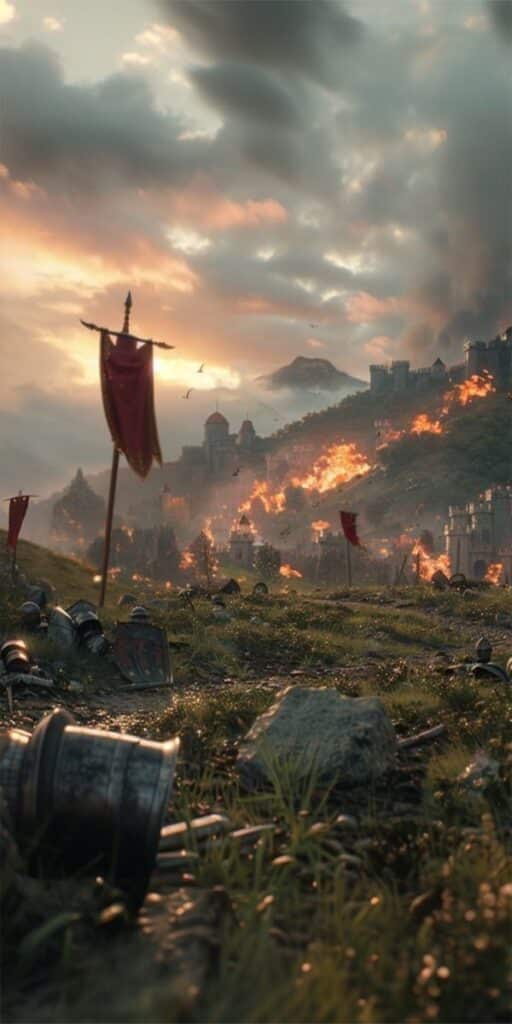
Conceptualizing and Planning Fantasy Worlds
Before you start creating fantasy landscapes, it’s crucial to define the core elements that shape your world. Focus on building a coherent environment, organizing your initial ideas, and setting the visual tone that will guide your entire artwork.
Ideation and World-Building
Begin with a clear concept of your world’s geography, climate, and key landmarks. Consider how these features influence the culture, creatures, and mythology within your fantasy landscape.
Ask yourself: What natural forces shape this world? How do magic or fantastical elements affect the environment? Write down your answers to maintain consistency.
Create a world map or a rough outline to visualize spatial relationships. This broader context helps you layer details logically, such as forests near rivers or mountain ranges with hidden valleys. Proper world-building grounds your fantasy in believable rules.
Sketching and Rough Compositions
Start with quick thumbnails to explore different layout ideas and perspectives. Focus on the overall balance of shapes and focal points rather than details.
Use simple shapes to block out mountains, water, and vegetation. Test varying horizon lines to control the viewer’s eye movement across your composition.
Keep several versions to compare and adapt. This iterative process saves time and helps you find the strongest visual narrative before committing to refined art.
Establishing Atmosphere and Mood
Decide on the emotional tone early by choosing lighting, color palette, and weather conditions. These aspects strongly influence how your fantasy landscape feels.
For a mysterious forest, use muted greens, fog effects, and dappled light. A vibrant magical city might feature bright colors, glowing elements, and dynamic skies.
Use contrasts in light and shadow to create depth and highlight key features. Mood anchors your artwork’s impact, making viewers connect with the imagined world.
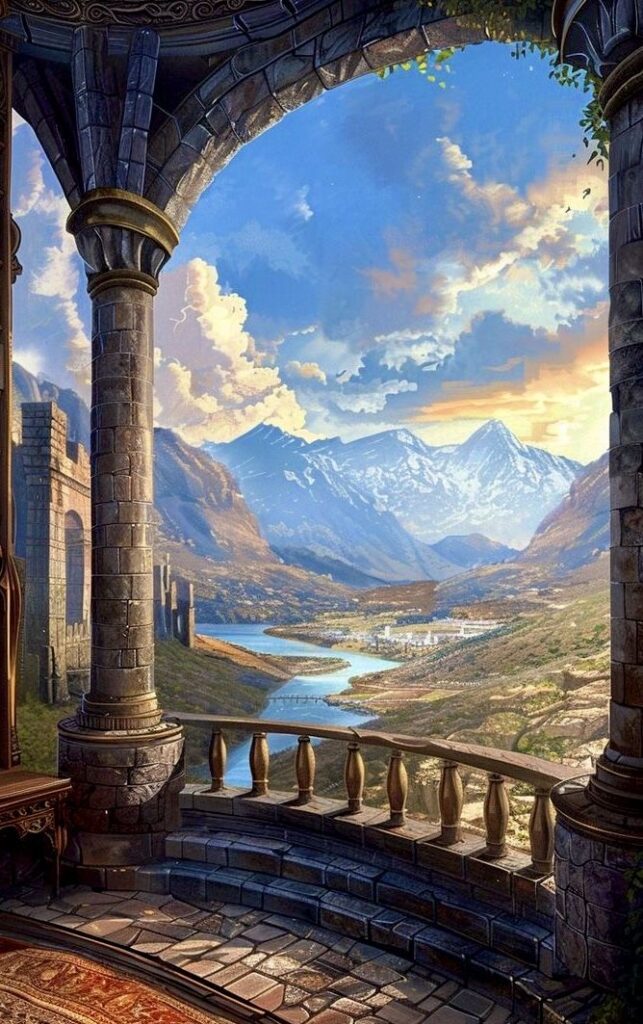
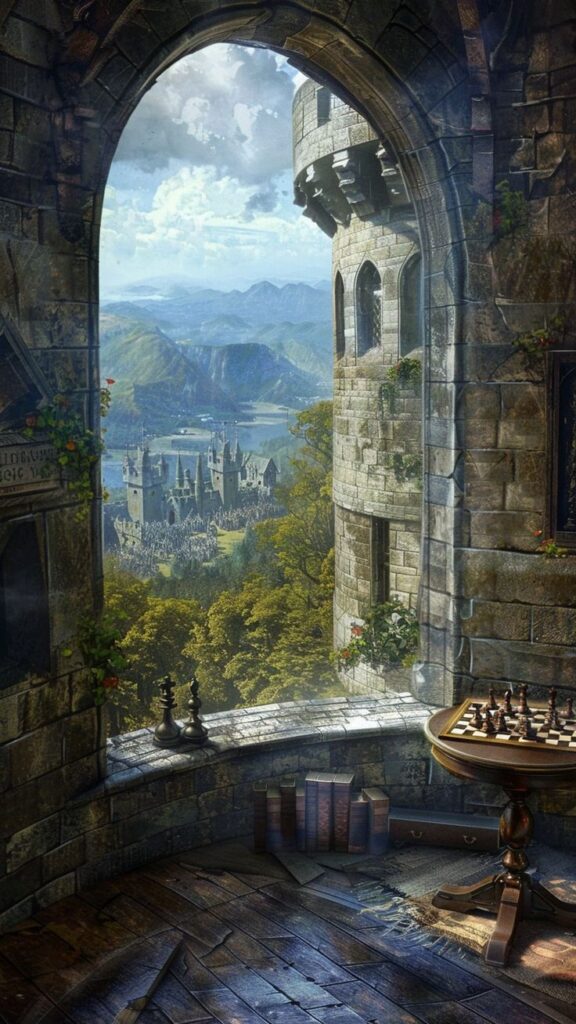
Techniques and Tools in Fantasy Landscape Art
Creating fantasy landscapes involves mastering specific approaches and selecting the right materials. You will need to understand how various digital tools work, balance traditional and digital methods, and effectively use references to build believable and engaging worlds.
Digital Art Tools and Software
You can use software such as Adobe Photoshop, Corel Painter, or Procreate for digital painting. These platforms offer brushes and textures that simulate traditional media while allowing additional control like layering and undo options.
3D rendering programs such as Blender or Unreal Engine enable you to construct and explore landscapes in three dimensions, adding realism to your vision. Photo manipulation tools help integrate real-world images, enhancing detail and depth.
API integrations can automate repetitive tasks, like generating texture maps or adjusting lighting, streamlining your workflow. Mastering these tools expands your ability to create intricate, immersive fantasy environments with precision.
Traditional Versus Digital Methods
Traditional methods involve using acrylics, oils, or watercolors on canvas or paper, which give your work tactile textures and organic feel. You may enjoy the physical interaction with materials and the unpredictability of brush strokes.
Digital techniques offer flexibility and efficiency. You avoid physical constraints, experiment freely, and rapidly iterate. Combining the two approaches—such as sketching by hand and then refining digitally—can produce rich, layered results.
Your choice depends on your style and goals, but many artists blend both to utilize the advantages of each without sacrificing creative control or detail.
Using Reference and Inspiration
Reference images are crucial for creating fantasy landscapes that feel grounded yet imaginative. Use at least three varied photos to inspire elements like scale, lighting, and natural forms.
Sources can include your own photographs, free online databases, or community-shared collections. Studying real-world landscapes helps you understand atmospheric perspective and composition, which adds depth and believability.
Analyzing other artists’ work can spark thematic ideas and visual techniques, but ensure you transform inspiration into original designs rather than copying. This process strengthens your visual storytelling and builds your unique artistic voice.
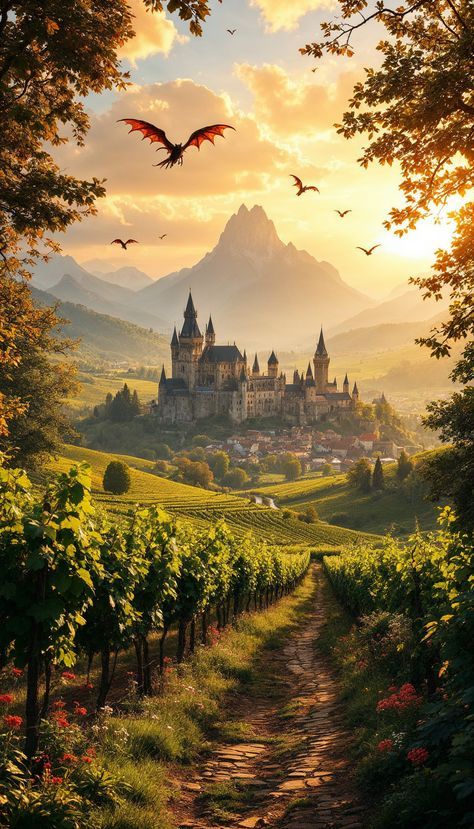
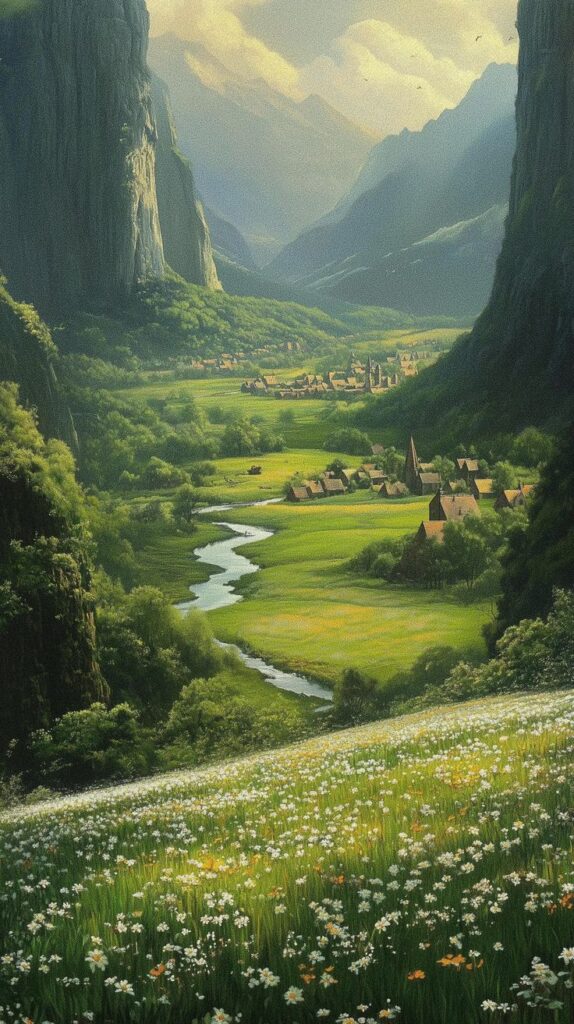
Environmental Storytelling and Visual Narratives
In fantasy landscape concept art, every element within the scene works together to tell a story without words. You use natural and fantastical features to guide viewers through your world, blending emotional cues and imaginative details to create a vivid narrative experience.
Setting the Scene with Landscape Features
You establish mood and context by carefully choosing landscape elements like mountains, forests, rivers, and weather conditions. These features not only define the world’s geography but also hint at its history and current state.
For example, jagged mountain peaks with snow suggest isolation and harshness, while lush, winding rivers indicate life and fertility. Lighting plays a crucial role—soft, warm light evokes peace, whereas dim, cold tones can imply danger or mystery. Position and detail in the environment help you direct the viewer’s eye, revealing layers of story through subtle clues embedded in the terrain.
Integrating Mythical and Conceptual Elements
To deepen your landscape’s fantasy feel, incorporate surreal or myth-inspired components like floating islands, enchanted forests, or ancient ruins. These elements challenge reality and invite exploration, enriching your world’s backstory.
Think about the function of each element: a dilapidated castle might imply past conflict; glowing plants could indicate magical influence. These details must blend seamlessly with natural features to keep the environment believable yet otherworldly. Purposeful design choices help you communicate lore, culture, and mythology visually, making your fantasy environment more immersive.
Creating Emotional Impact through Scenery
Your fantasy landscapes should evoke specific emotions to strengthen narrative connection. You do this by balancing color schemes, scale, and composition carefully.
Bright, vibrant palettes can express hope and wonder. Dark or desaturated tones often suggest decay or danger. Scale also matters: towering cliffs can inspire awe, while close-up, tangled undergrowth may produce tension or claustrophobia. Composition guides feelings; open spaces encourage freedom, while constricted paths create suspense. Use these tools deliberately to ensure your landscapes resonate emotionally and support the story you want to tell.
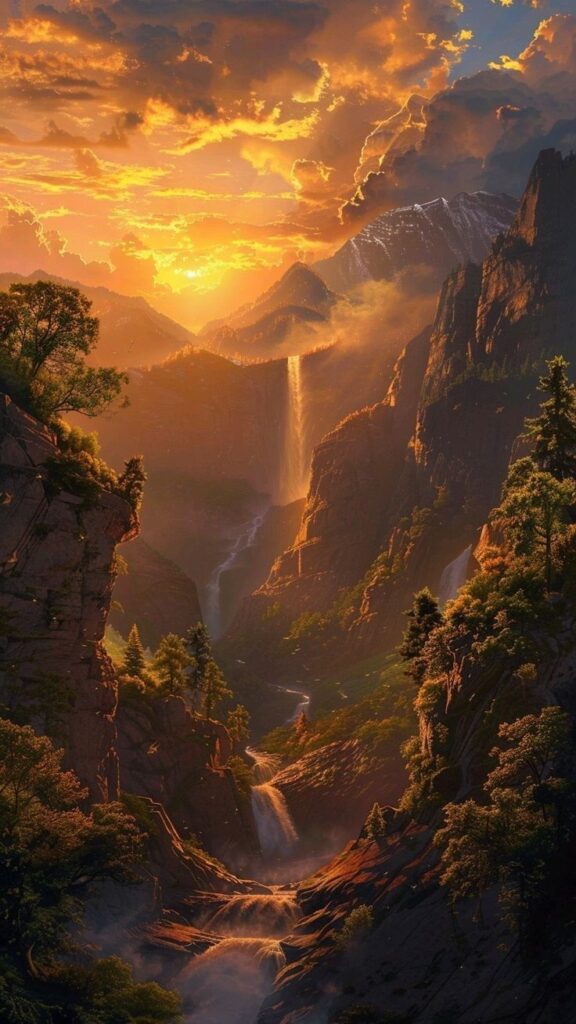
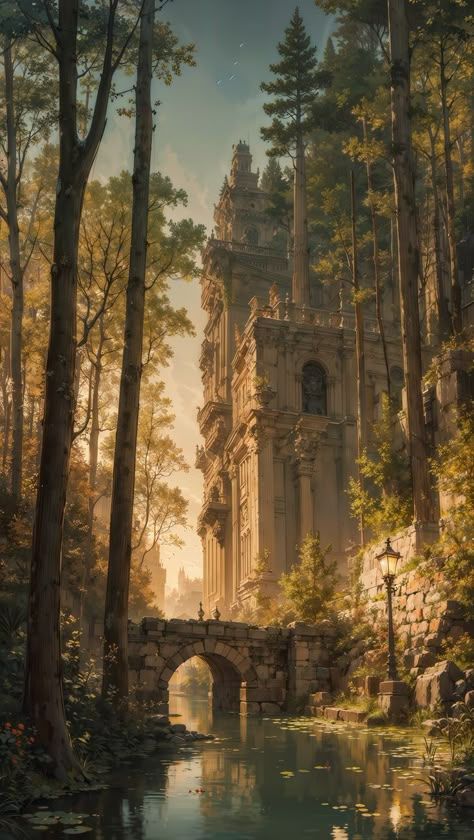
Applications and Industry Use Cases
Fantasy landscape concept art plays a crucial role across several industries, serving as a foundation for immersive storytelling and world-building. Its applications span entertainment, game and film production, and increasingly, technology integration through APIs for art platforms.
Fantasy Landscapes in Entertainment
You encounter fantasy landscapes extensively in entertainment media. These environments are key to creating believable, magical worlds that engage audiences in books, TV shows, and digital content. Artfully designed landscapes help establish mood, support narratives, and define the uniqueness of a story’s universe.
Visual depth and imaginative elements like mythical creatures or exotic plants draw viewers deeper into fictional settings. Your ability to craft these scenes impacts viewer immersion and emotional connection. Entertainment studios often commission specialized artists to build these worlds, ensuring consistency across multiple platforms.
Concept Art for Games and Film
In games and films, fantasy landscape concept art directly influences production design and visual effects. Your concept art guides 3D modeling, animation, and set design teams, helping them visualize complex environments before development.
You’ll often blend traditional and digital techniques to produce detailed, atmospheric scenes that comply with narrative and gameplay requirements. Rapid iteration tools let you adjust landscapes based on feedback from directors or developers, speeding up project timelines.
Concept artists ensure every element—from terrain to lighting—complements the story and characters. This process is essential for crafting immersive worlds that define the player’s or viewer’s experience.
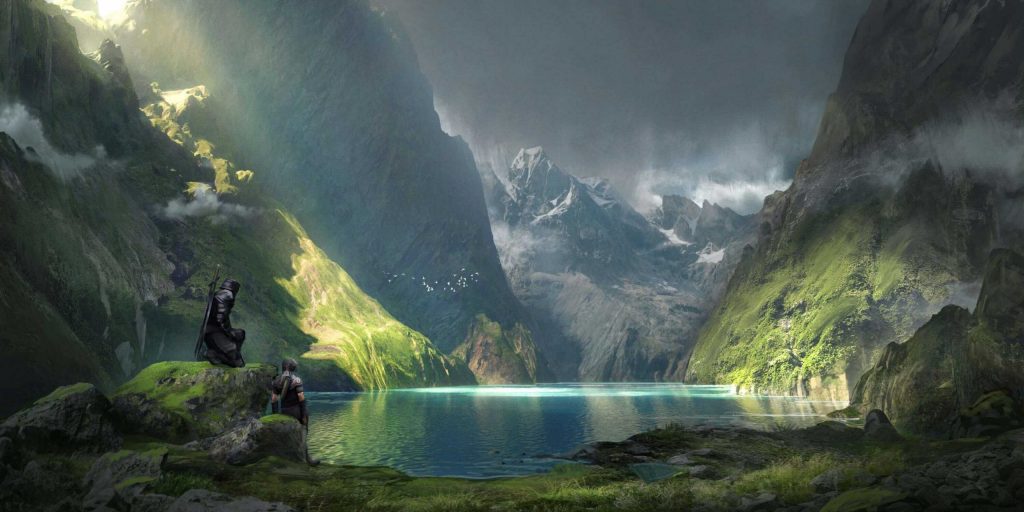
API Integrations for Art Platforms
APIs increasingly connect fantasy landscape concept art with digital workflows. You can use APIs to integrate AI-powered image generation directly into your favorite art platforms. This enables quicker prototyping and more diverse creative outputs without leaving your workspace.
Platforms like Reelmind.ai provide APIs that automate parts of landscape creation while allowing you to retain control over key artistic decisions. Such technology streamlines your creative process and expands your toolkit with features like style transfer, texture generation, and scene composition.
By leveraging APIs, you enhance collaboration across teams and accelerate iteration cycles. This technical edge gives you flexibility in meeting tight deadlines and evolving project demands.
- 203shares
- Facebook0
- Pinterest203
- Twitter0
